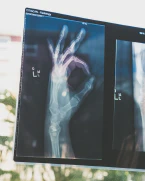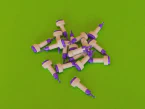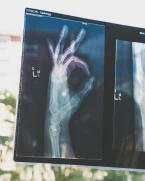Bridging Divides: Building Vaccine Trust with Empathy

Unraveling the Deep Reach and Cost of Health Myths
Memories of my extensive research bring to light the powerful, often underestimated, influence of health rumors. These aren’t just whispered tales passed down through generations or the latest neighborhood gossip; they have profound, real-world consequences. Take, for instance, the misconception that eating ample garlic or chugging copious amounts of water could shield one from diseases like the coronavirus. Though such ideas might seem harmless or even laughable, they underscore a larger issue: the rapid dissemination and acceptance of unverified health information.
Throughout my years delving into this topic, I’ve uncovered numerous instances where these health myths didn’t just misguide a single individual or a community but reverberated globally. Such misinformation often stems from a lack of trust in health institutions or arises from deep-rooted cultural or political beliefs. As benign as they might seem on the surface, these rumors can lead to far-reaching health, social, and even economic implications.
One poignant memory I hold close is from a time when I collaborated with UNICEF’s Global Immunization programme in northern Nigeria. The prevalent rumor there wasn’t just about some homemade remedies. People believed that the polio vaccine, an effort to protect their children, was laced with harmful intentions. Some thought it was a contraceptive, some believed it caused AIDS, and yet others were convinced it was a ploy by intelligence agencies.
Imagine the heartbreak and frustration when children were succumbing to measles, yet the communities were wary of vaccines, associating them with betrayal and distrust. This wasn’t a mere clash of factual knowledge; it was a confrontation between deeply ingrained beliefs and the efforts of health professionals. At the heart of it all was broken trust, and not just with the local population. Key figures, like the state governor of Kano, also succumbed to these beliefs, hindering the polio eradication initiative for nearly a year.
The repercussions? Beyond the immediate health concerns, the program faced a financial setback of $500 million. The mistrust-induced hiatus allowed the Nigerian strain of the polio virus to travel to over 20 countries. All this cost, both in monetary terms and human suffering, stemming from mere rumors.
I often reflect on these experiences, contemplating ways to bridge the trust gap. It’s not about simply countering rumors with facts but understanding the deeper narrative, the stories, emotions, and histories that birth them. It’s a journey of listening, understanding, and empathizing. The challenge is monumental, but the stakes - global health and well-being - are even higher.
Unveiling Tools and Wisdom in the World of Vaccine Confidence
In my vast explorations, a particular journey stands out: the quest to understand vaccine confidence. It’s no secret that vaccines, which hold the potential to save countless lives, are often met with skepticism, apprehension, and sometimes even fear. This complex tapestry of emotions isn’t solely a modern phenomenon. Throughout history, whenever new vaccines were introduced, they ignited a dance between hope and distrust.
Now, imagine a world where we could measure this confidence, almost like taking the temperature of global sentiments. This thought prompted an exhaustive exploration of innovative tools designed to track and understand the ebb and flow of public trust in vaccines.
I vividly remember the first time I came across a sophisticated map plotting real-time vaccine sentiments across various regions. The colors shifted from cool blues, indicating strong trust, to alarming reds where skepticism prevailed. But it wasn’t just about these visual cues. The magic lay in the underlying data, stories, and local narratives that painted a comprehensive picture. Each pin on that map was a story, an emotion, a local rumor, or a heartfelt testimonial.
Such tools aren’t just eye-catching visuals; they’re invaluable aids for health organizations, policymakers, and community leaders. Insights drawn from them enable proactive interventions, tailored awareness campaigns, and personalized approaches to address local concerns. In regions where fear outweighed trust, for instance, deeper dives often revealed past betrayals, health scandals, or simple misconceptions that sowed the seeds of doubt.
The beauty of these tracking tools lies not just in their analytical prowess but in their empathetic approach. They don’t just quantify confidence; they illuminate the human stories behind the numbers. And in this illumination, lies the key to fostering understanding, bridging gaps, and building a world where trust in lifesaving vaccines is the norm, not the exception.
How Political Beliefs Can Shape Perspectives on Vaccination
Diving deep into the myriad facets of human behavior and beliefs, I’ve unearthed a particularly compelling narrative. The story of how political beliefs can become intertwined with our perceptions of health, especially when it comes to vaccines, is nothing short of fascinating.
Picture this: two neighbors living side by side, sharing a fence and occasionally, cups of sugar. Yet, when discussions veer toward vaccines, their views diverge like roads not taken. Why? Often, it’s not just about medicine or science; it’s also about the ideologies they subscribe to.
I’ve always been intrigued by how such a personal decision - to vaccinate or not - can be influenced by political leanings. The spectrum of political beliefs, with its myriad shades and hues, has the unique power to shape our perceptions, including our stance on vaccinations.
Take, for instance, a community where individual liberties are fiercely championed. Here, the conversation may lean more towards personal choice and freedom, rather than collective wellbeing. Conversely, in areas where the collective good is emphasized, the discourse might revolve around herd immunity and societal responsibility.
But here’s the twist: it’s never just black and white. Complex layers of history, personal experiences, trust (or lack thereof) in institutions, and cultural nuances play critical roles. After all, our beliefs aren’t formed in isolation; they are the culmination of countless influences, discussions, and experiences.
It’s crucial to understand this intricate dance between politics and vaccine views. Not for blame or division, but for empathy. By recognizing these influences, we can foster healthier, more productive dialogues that aim to inform, understand, and unite. After all, when it comes to public health, isn’t unity the ultimate goal?
Fostering Confidence in Vaccines: An Empathetic and Informed Approach
In the vast tapestry of memories and experiences that mold our perceptions, there’s one thread that stands out prominently: the power of trust. Imagine a world where everyone had unwavering faith in vaccines. The road to that world, however, isn’t paved with just facts and figures; it’s woven with understanding, empathy, and genuine conversations.
Recall a time when someone changed your mind about something. It wasn’t just a barrage of data, was it? More often than not, it was the gentleness in their approach, the sincerity in their voice, and the genuine concern they had for your wellbeing. That’s the magic of empathy.
Now, when it comes to vaccines, trust has taken a backseat for many. Various reasons feed this skepticism - misinformation, historical mistrust, personal experiences, and more. But here’s a revelation: while facts are crucial, they alone can’t rebuild this lost trust. The building blocks for that are understanding and empathetic engagement.
Consider the mother who hesitates to vaccinate her child, not because she’s against science, but perhaps she heard a distressing story from a friend. Or think of the elderly gentleman who’s wary, having lived through times when public trust was broken. Their reservations are not just barriers; they’re opportunities for understanding.
The journey to rebuild trust in vaccines isn’t a sprint; it’s a marathon of meaningful conversations. It requires us to listen actively, engage empathetically, and share knowledge without judgment. In doing so, we don’t just dispel myths; we bridge divides.
In this shared pursuit of global health, let’s remember that it’s not about convincing; it’s about connecting. And in that connection, we’ll find the trust we seek.
Conclusion
At the heart of every public health endeavor lies an intricate dance between science, communication, and trust. As we navigate the multifaceted landscape of vaccine confidence, it becomes clear that building trust isn’t solely about broadcasting scientific achievements, as monumental as they may be. Instead, it’s rooted deeply in understanding the human stories and emotions that intertwine with our medical narratives.
Every individual, from the hesitant mother to the cautious elderly, carries with them a unique mosaic of experiences, beliefs, and concerns. Recognizing these stories and addressing them with empathy and patience can be the key to fostering renewed confidence. The journey might be long and winding, but with each understanding gesture, each patient explanation, and every shared moment of genuine concern, we take one step closer to a world where trust in vaccines is the norm, not the exception.
In the end, the pursuit of global health isn’t just about medicines and treatments; it’s also about the human connections we foster along the way. As we move forward, let us embrace the power of empathy, knowledge, and understanding as our guiding lights.
















